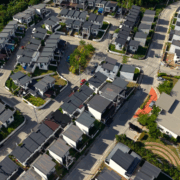The cost of eradicating TB

The World Health Organization (WHO) Global Tuberculosis Report 2025 ranked the Philippines third among countries with the highest burden of tuberculosis (TB) cases.
Global TB cases, per the report, also recorded the highest level on record with 10.7 million people who developed TB last year. Of this number, 8.3 million were considered newly diagnosed while deaths reached 1.23 million.
Even more concerning is that the Philippines is one of four countries where the disease is “severely endemic.”
The country’s situation hardly changed from 2024 where it also accounted for 6.8 percent TB cases in the world, with an incidence rate of 625 new cases per 100,000 population.
“TB remains one of the leading causes of death in the country, claiming an estimated 98 Filipino lives each day,” WHO noted. While this figure reflects a 3-percent reduction from the previous year, there is still much to be done in making testing and treatment accessible to vulnerable communities as well as removing the stigma attached to the disease.
Treatment regimen
The Department of Health (DOH) said it was intensifying its TB elimination campaign and plans to screen 12 million Filipinos by next year. It has also allocated P4.2 billion for the TB program in its proposed budget next year.
Health Secretary Teodoro Herbosa said treatment regimen and case investigation have also been expanded to cover drug-resistant TB cases. He noted that the DOH was already using an innovative treatment for drug-resistant TB that cuts the treatment from two years to only six months with a higher treatment success rate.
To accomplish its goals in eradicating TB, however, the government must allocate more budget. But is P4.2 billion enough to do this?
In 2020, Dr. Angelina “Helen” Tan, who then chaired the House of Representatives committee on health, said the government needed P6 billion in the next three years for anti-TB drugs alone. At the time, the plan was to reduce the incidence rate from 554 to 448 cases per 100,000 people by 2023. Obviously, this has not been achieved.
In a letter to this paper, Tan said the government will require about P50 billion by 2023 to fund the anti-TB program. This amount would have covered medicines, diagnostic commodities, human resources, and other logistical requirements to ensure that the drugs reach hospitals, clinics, or health centers.
Global funding cuts
Budget problems are not only unique to the Philippines with the WHO warning that global funding cuts could imperil the fight against TB. It noted that funds to fight the disease have stagnated since 2020 and the $1.2 billion raised for TB research was only 24 percent of the annual target. There was also the shutdown of the United States Agency for International Development (USAID), the leading bilateral donor for global TB programs, by the Trump administration earlier this year that could further complicate the problem.
A study published in September in the journal Public Library of Science Global Health, projected that a long-term funding gap in the 26 high-burden countries reliant on USAID funding, could result in an additional 10.7 million TB cases and 2.2 million deaths over the next five years.
Even short-term funding disruptions, Tereza Kasaeva, director of the WHO Department for HIV and TB, said “could lead to hundreds of thousands of excess deaths.”
Last month, health ministers from four of the world’s highest-burden TB countries, including the Philippines’ Herbosa, released a joint opinion published by Devex, an independent media organization covering global development, calling for domestic financing and innovative funding models.
Preventable and curable
They said ending TB, a preventable and curable disease, was no longer a technical challenge but a financing one. They proposed expanding universal health coverage to include TB care, taxing unhealthy products to fund health services, leveraging development bank loans, and exploring debt-for-health swaps.
The Philippines already has most of these measures but the government can still do more to help reduce the price of TB treatment that could range from P35,000 to as much as P600,000.
An article published on the DevelopmentAid website last month cited a 2016 to 2017 survey showing that 42.4 percent of TB-affected households in the country spent over 20 percent of their yearly income on treatment. This has forced patients, many of them poor, to abandon the required six-month regimen prematurely.
“The fact that TB continues to claim over a million lives each year, despite being preventable and curable, is simply unconscionable,” said WHO Director-General Tedros Adhanom Ghebreyesus.
What makes this even worse in the Philippine setting is how public funds end up fattening the pockets of corrupt politicians and contractors when they could have gone as well to crucial health services including anti-TB programs. The government must cough up the funds necessary to back its goal of eradicating a preventable disease that continues to put at risk the health of the rest of the population.

















